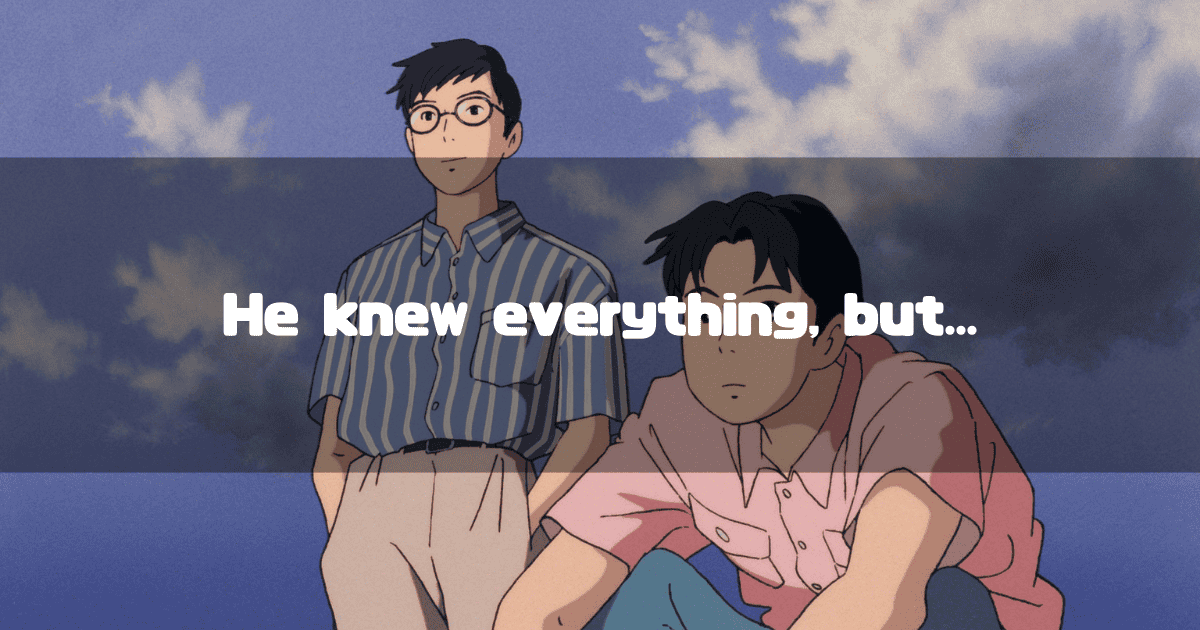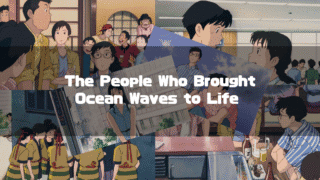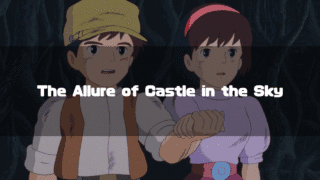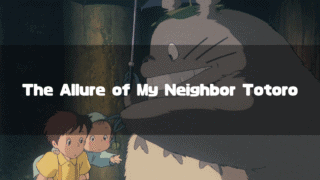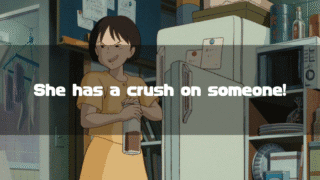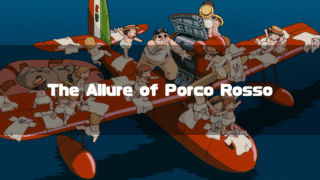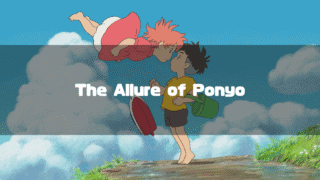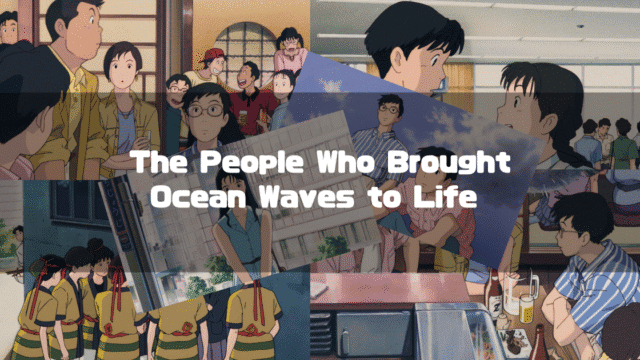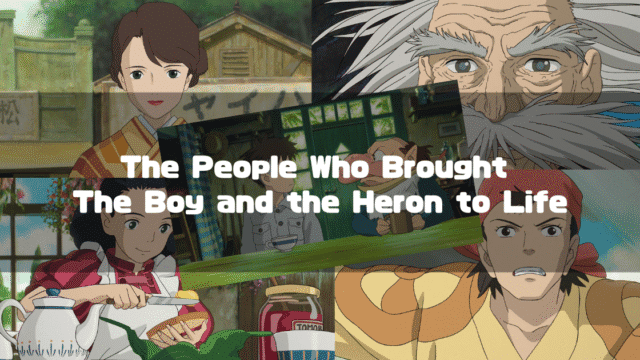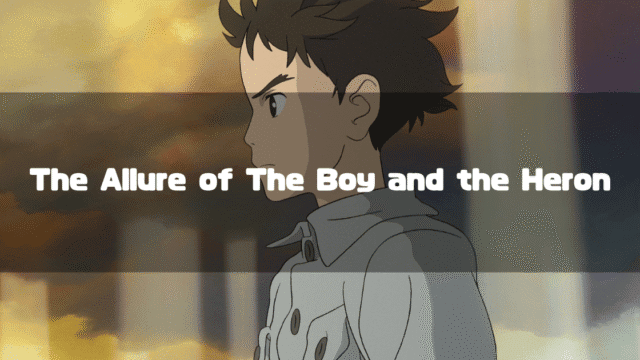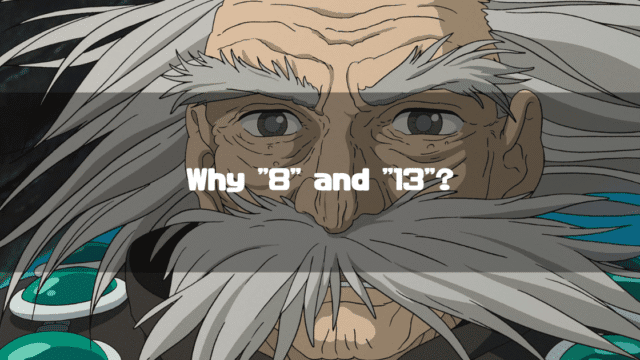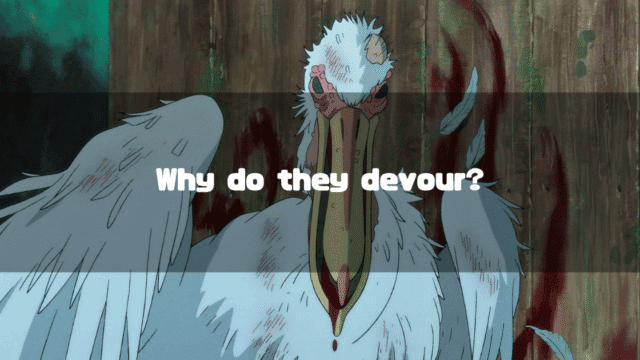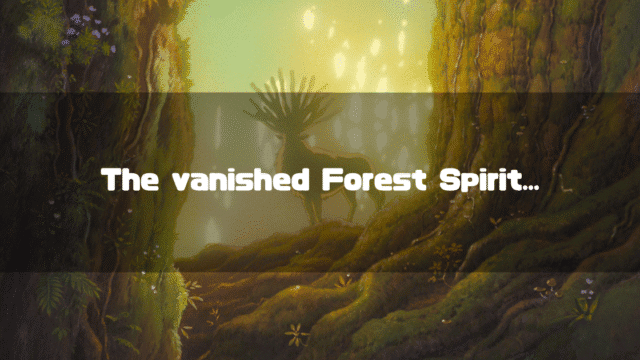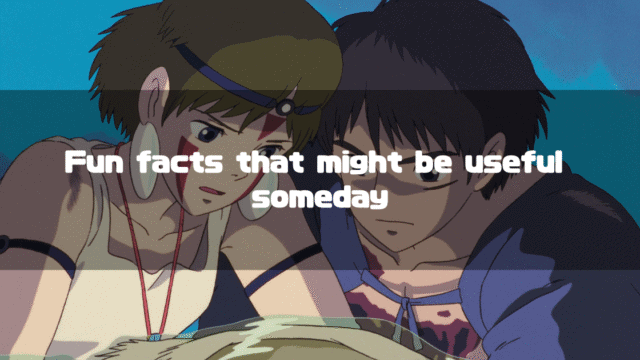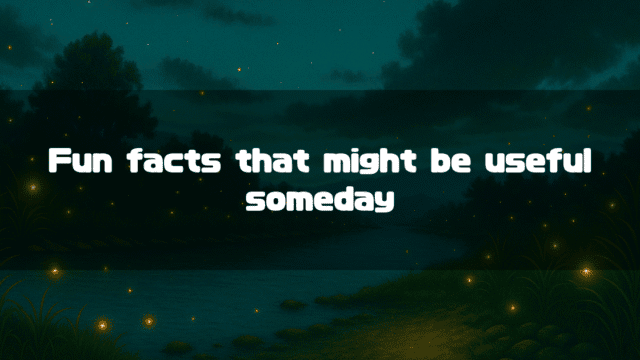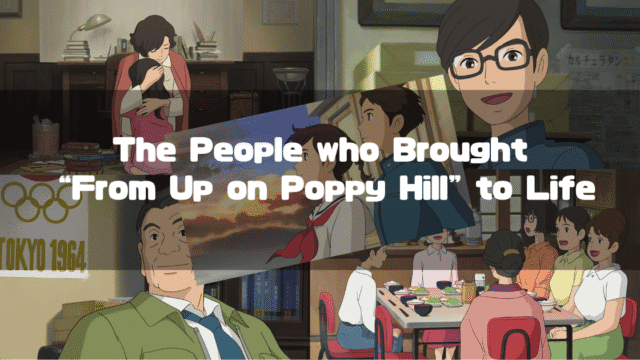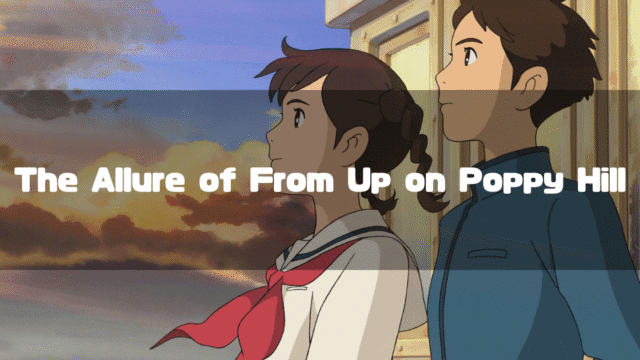Ocean Waves(Studio Ghibli Official) is an animated work that was broadcast as a 90-minute special on the Nippon TV network on May 5, 1993. Studio Ghibli began hiring animators as full-time employees starting with Kiki’s Delivery Service, and this film was produced by a “young team” of these full-time animators. Although they were called “young,” the director was Tomomi Mochizuki and the animation director was Katsuya Kondo, who would be considered masters by today’s standards.
As Toshio Suzuki has also mentioned, the reason for appointing a “young team” was related to “Studio Ghibli’s future plans.” In short, they needed to create a situation where they could produce excellent works that were not under the control of Hayao Miyazaki or Isao Takahata. It seems this was an experimental attempt to do just that.
I am very fond of the resulting work, Ocean Waves, but it seems Hayao Miyazaki did not feel the same way. The Blu-ray release of Ocean Waves includes a special feature with a roundtable discussion with the production staff from that time. According to them, Miyazaki’s critique was that “‘Ocean Waves’ only depicts how young people ‘are,’ whereas a work of art must depict how they ‘ought to be.'”
That may be true, but this film remains one of my favorite “Ghibli works.” This time, I’d like to talk about what I love about this film, but first, let’s review the plot (full spoilers ahead).
*This article is an English translation of the original Japanese article, 【海がきこえる】あらすじとその面白さ-自分に嘘をつく物語-.
An AI provides an easy-to-understand explanation of this article’s content in a conversational (radio-style) format.
- Detailed Synopsis
To summarize the plot: “Taku Morisaki, a university student in Tokyo, is on his way to a high school reunion in Kochi when he reminisces about his high school days with his best friend, Matsuno, and a transfer student, Muto. Through a trip to Tokyo with Muto and a rift in their friendship due to misunderstandings, he reconciles with Matsuno upon meeting again and reaffirms his own feelings upon reuniting with Muto on a station platform.” A more detailed synopsis is provided. - The Lies and Misunderstandings of Youth
Ocean Waves is a coming-of-age story depicting the misunderstandings between Taku and Rikako. A core part of the film is Taku’s struggle between friendship and love, and how he continues to lie about his true feelings. - Self-Denial Through Narration
The protagonist’s monologue unfolds as narration throughout the entire film, but the structure, in which this narration is actually a “lie” to the audience, creates an interesting dynamic similar to that found in The Melancholy of Haruhi Suzumiya.
Ocean Waves (1993) Synopsis (Spoilers Ahead)

Quick Summary
-
The Beginning of Youth and an Encounter
The protagonist, Taku Morisaki (a high school student), is spending his days in a seaside town when he meets Rikako Muto, a transfer student from Tokyo, and begins to develop a faint crush and hidden feelings for her. -
Friendship and the Conflict It Brings
Through his interactions and conflicts with friends, including his best friend Yutaka Matsuno, the story portrays the unique friendships and struggles of youth. -
The Beauty of “Tokyo”
A trip to Tokyo with Rikako in the middle of the story strengthens Taku’s admiration for the city. Rikako Muto also becomes a symbol of “Tokyo.” -
Beautiful Seaside Scenery
As the title symbolizes, the sound and scenery of the ocean permeate the entire story, etching unforgettable moments of youth. -
Narration and Memory as Recollection
The story progresses as the protagonist, now a university student, reminisces about his high school days and memories of love, evoking a simultaneous sense of nostalgia and poignancy.
Character Map
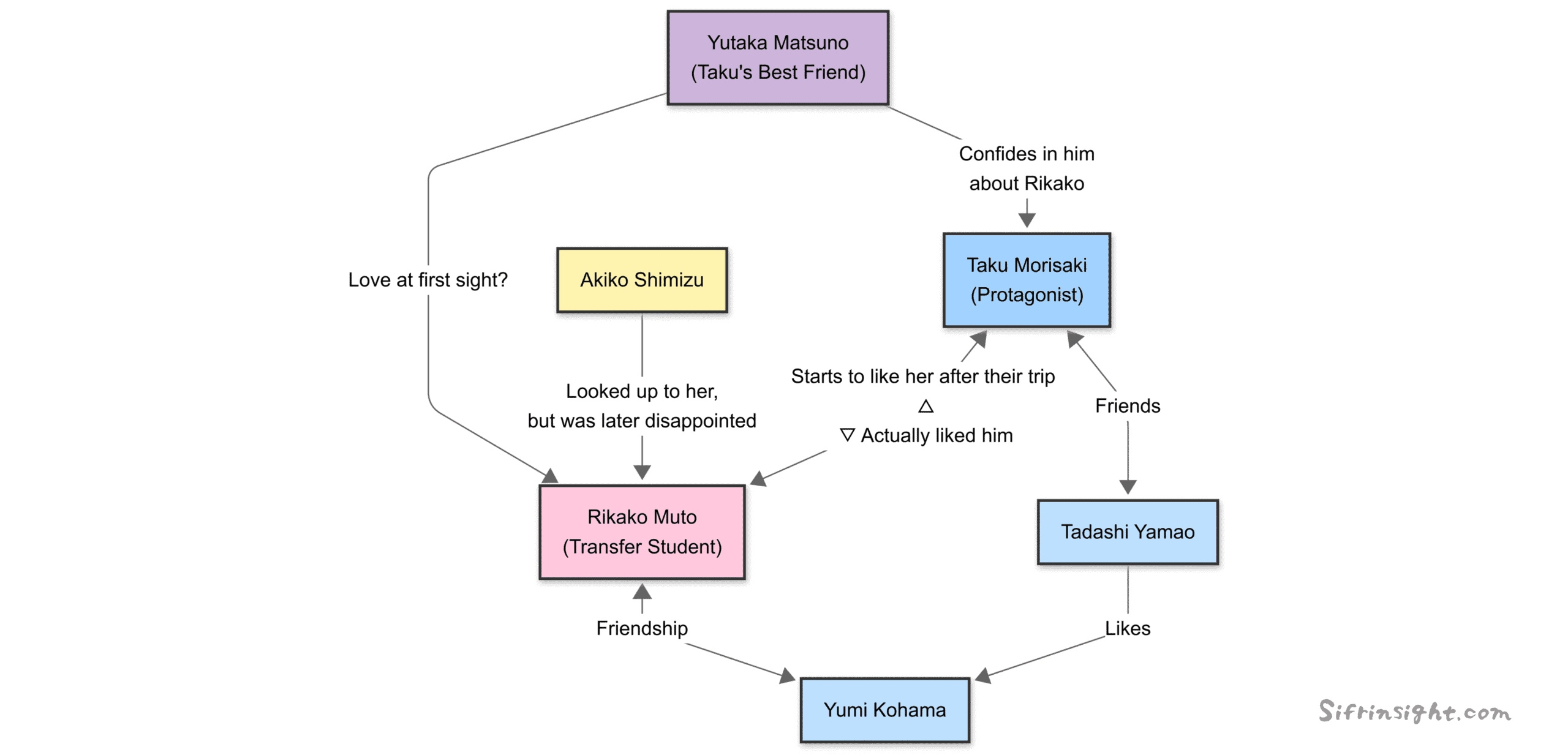
Detailed Synopsis
The protagonist is Taku Morisaki, who graduated from a combined junior and senior high school in Kochi and is now attending a university in Tokyo. He is heading back to his hometown of Kochi to attend a class reunion, and on the way, memories of his high school days come flooding back.
He had a best friend named Yutaka Matsuno. When they were in junior high, the school trip was canceled due to “declining academic performance.” Of course, the students protested, so the school announced at an assembly that they would hold a “briefing session” for those who wished to attend. However, the method for gathering interested students was by a “show of hands.” The protagonist, Taku, bravely raised his hand, and one other boy did the same. That boy was Yutaka Matsuno.

There was no way a “briefing session” would be held for just two people. On the blackboard of the classroom that was supposed to be the venue, it was simply written that the session was canceled and that they should write down their opinions. In the end, they were ignored by the school, but the time they spent alone together was very special for Taku, and from that day on, the two became best friends.
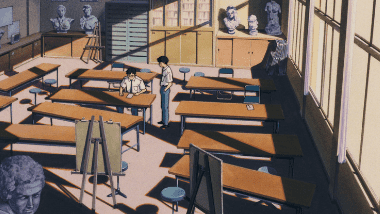
When the two were in their second year of high school, a small incident occurred. A female student named Rikako Muto transferred to their school.
As the class president, Matsuno was tasked with helping Rikako get used to the school, and in the process, Matsuno “fell for” her. An ecstatic Matsuno would even call his best friend Taku in an excited state just to say things like, “I went to Muto’s house.” Taku was a bit displeased with this situation. He didn’t like that his best friend was so hung up on a girl.
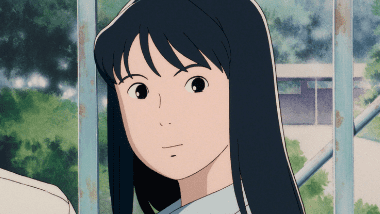
Rikako’s transfer was due to her parents’ divorce, and she had come along with her mother to her mother’s hometown. However, Rikako herself was unhappy with her mother’s decision and was steadily making plans to go see her father in Tokyo. The protagonist, Taku, gets caught up in this plan and ends up having to accompany Rikako on her “trip to Tokyo.” Through this journey, Taku’s feelings about the place called “Tokyo” become definitive, and he also has a guilty experience concerning Matsuno.
After the trip to Tokyo ended and he returned to Kochi, the days continued as if nothing had happened. However, on the day of the school festival, another incident occurs. Rikako is called to the back of the school building for being “uncooperative with the school festival” and is surrounded by the girls from her class.
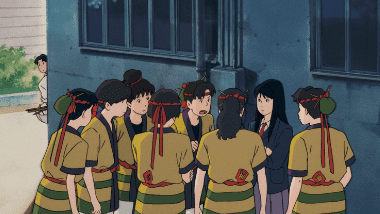
Nevertheless, with her competitive spirit, Rikako manages to fend off her classmates. Taku, who was watching this from hiding, casually calls out to her, “You’re amazing,” but she slaps him, yelling, “You’re the worst!” Shortly after, Matsuno conveniently appears, and when Taku tells him what happened, Matsuno slaps him again, saying, “You really are the worst!”
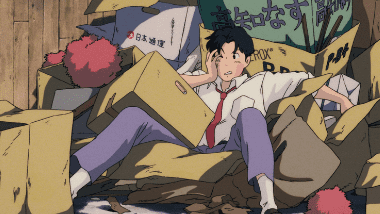
After that, Taku becomes estranged from Matsuno, who had been his one and only best friend.
While tracing these memories, Taku arrives in Kochi, where Matsuno is waiting to pick him up. Taku and Matsuno talk about those days at a nearby pier. There, Matsuno tells him, “I hit you because I knew you liked Muto.” Taku had been desperately hiding his feelings for Matsuno’s sake, but at that moment, his feelings for Rikako had been exposed. The two then attend the class reunion together, but Rikako is not there. However, they hear from a woman who recently met Rikako that she had said, “The person I like is someone who falls asleep in the bathtub.” The “person who falls asleep in the bathtub” was none other than Taku. During their trip to Tokyo, when Rikako had crashed in his hotel room, Taku had given her the bed and slept in the bathtub himself. In the end, he doesn’t meet Rikako in Kochi, but upon returning to Tokyo, Taku sees her again on a station platform.
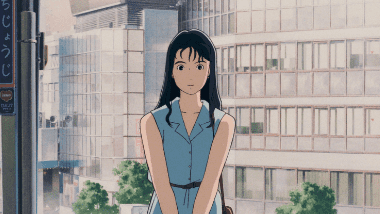
There, Taku reaffirms his feelings for Rikako.
That is what I believe to be the synopsis of Ocean Waves. Now, what exactly is so interesting about this work?
The Appeal of Ocean Waves (1993)
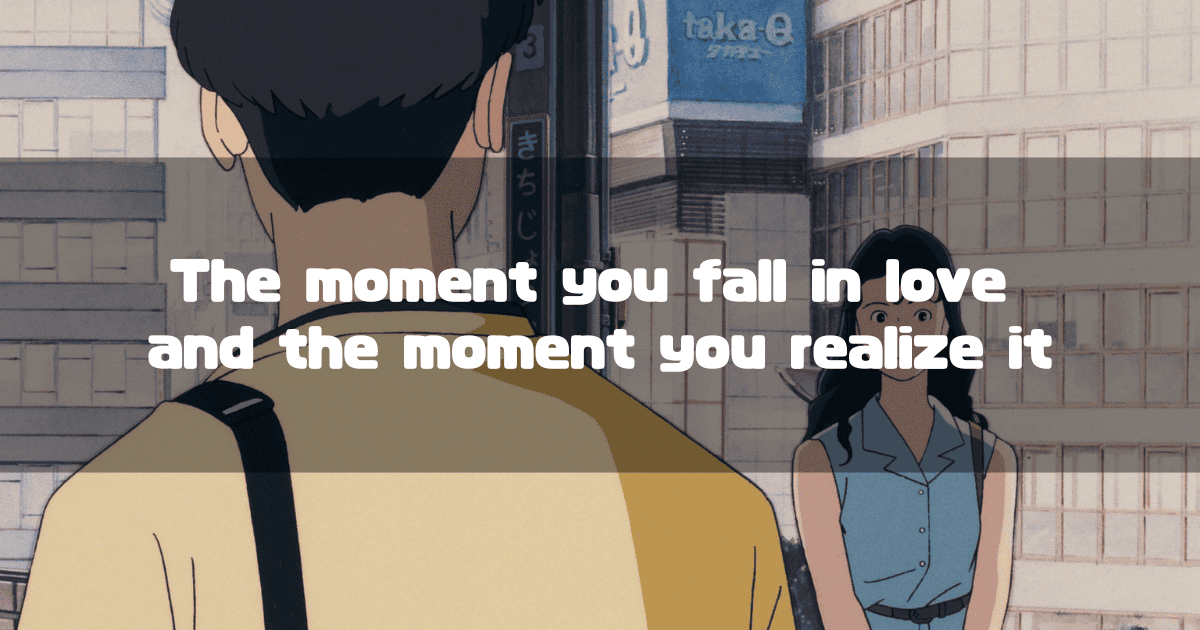
From here, I’d like to write about the appeal of the work Ocean Waves. The basic plot revolves around the love triangle between the protagonist “Taku Morisaki,” his best friend “Yutaka Matsuno,” and “Rikako Muto.” However, only Matsuno’s crush is depicted clearly. For him, it’s simply love at first sight. But the first interesting point of Ocean Waves is “When did Taku fall for Rikako, and when did Rikako fall for Taku?” First, let’s consider Rikako Muto.
When Did Rikako Fall for Taku?
It’s very difficult to pinpoint when Rikako Muto fell for Taku, but it’s clear when she realized she had fallen for him: during the school festival incident. When she slapped Taku, who had just stood by and watched while she was being cornered by her classmates, saying “You’re the worst!”, I believe in that instant, Rikako Muto realized, “Oh, I like Taku.” Rikako’s expression right after hitting Taku conveys this.
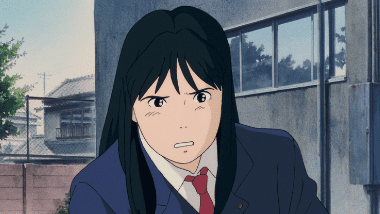
She hit him because it was Taku. If it had been anyone else, she would have just ignored them. The act of hitting him is a declaration that she had some kind of complaint.
That complaint was, in the end, about him being a bystander to her difficult situation, a feeling of “Why didn’t you do anything?” This kind of dissatisfaction doesn’t arise with someone you don’t care about. It was because someone who was not insignificant to her just watched her struggle without doing anything that Rikako went out of her way to slap Taku and call him “the worst.”
So, when was the moment she fell for him?
This is quite difficult, but I think it was probably during the “trip to Tokyo.” Specifically, wasn’t it during the three-way meeting with Rikako’s ex-boyfriend? Rikako’s ex-boyfriend says something about her mother, “Thinking about the child, it’s pretty cruel, isn’t it?” Hearing this, Taku retorts, “You guys are so pathetic, not understanding a parent’s feelings!” and leaves his seat. When Rikako appears before Taku after this, she seems as if a weight has been lifted, in a way, almost indifferent. At that moment, the existence of Taku must have become “different from other people” within Rikako.
Taku’s remark was based on something his mother had said. When Taku made a flippant comment like, “It’s a pity that circumstances can change just because of the parents’ convenience,” his mother scolded him, saying, “A mother would absolutely bring her child with her! You should think about a parent’s feelings for once!” However, thanks to this “scolding,” Taku was able to win Rikako over. Taku probably feels indebted to his mother.
Next, let’s talk about Taku.
When Did Taku Fall for Rikako?
Unlike Rikako, Taku’s case is much easier to understand. Early in the story, a gym class is depicted where Rikako soundly defeats a member of the tennis club. The way he looks at her, his eyes are glued to Rikako.
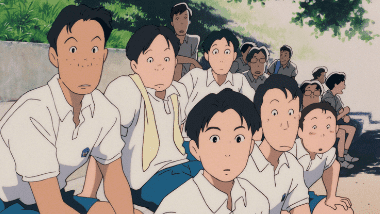
As you can see in the image above, Taku is drawn completely differently from the other guys. What he was “seeing” was different from them (although they were all looking at Rikako, for Taku, there was something that changed his perception). After gym class, when Taku meets Matsuno, he rambles on and on about Rikako during the class, “without even being asked.” In other words, he is desperately trying to express that he “doesn’t think anything of Rikako.”
To put it simply, he had already fallen for her the first time he met her. But because he heard about Matsuno’s feelings first, he tried to prioritize their friendship, but in the end, Taku had also fallen for Rikako.
And I believe this aspect of Taku is the core of the work Ocean Waves.
A Common Thread with The Melancholy of Haruhi Suzumiya [A Story of Lying to Oneself]
In the end, what kind of work was Ocean Waves? I think it’s “a story about lying to one’s own inner self for the first time.” Of course, the one who lied was Taku.
Even as his best friend Matsuno’s crush was unilaterally revealed to him, Taku had fallen for Rikako the very first time he met her. But, trying to prioritize friendship, Taku desperately tries to hide those feelings. The scene where Taku receives a call from Matsuno who “just visited” Rikako’s house is portrayed in the monologue as “dissatisfaction with Matsuno being obsessed with Rikako,” but in reality, he is wishing that “Matsuno’s attention towards Rikako would disappear.”
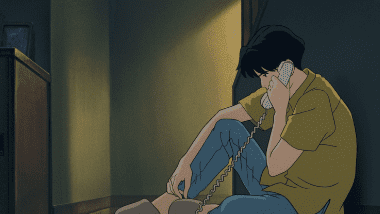
A characteristic of Ocean Waves is that “the protagonist’s monologue serves as the narration.” And that monologue is “all lies.”
There is no single answer to the question “What is youth?” but I think there are generally two ways of being: one is “being honest with your inner self for the first time,” and the other is “lying to your inner self for the first time.”
I believe the youth depicted in Ocean Waves was the latter. Taku desperately hides his inner feeling of “being in love with Rikako.” He mainly hides it from Matsuno, but he is also lying to us, the audience, through his narration.
Now, don’t we know a similar story? The Melancholy of Haruhi Suzumiya. It’s very difficult to say who the protagonist of The Melancholy of Haruhi Suzumiya is, but for me, it’s “Kyon.” He also played the role of “monologue-cum-narrator” throughout the work. And his monologue, his narration, was always “negative towards Haruhi.”
But that was a complete lie. To put it simply, Kyon had fallen for Haruhi at first impression, but he hid it completely. This is revealed in the movie The Disappearance of Haruhi Suzumiya.
The work Ocean Waves, much like The Melancholy of Haruhi Suzumiya, is “a story about lying to one’s own inner self.” Isn’t this the “youth” that lies in many people’s memories? When you get older, you realize how important it is to be honest and that it’s faster, but youth is perhaps that moment when you still do things the hard way. By empathizing with the character of Taku, who lied so desperately, perhaps Ocean Waves becomes an even more interesting work.
The images used in this article are from “Studio Ghibli Works Still Images“.
About the Author
Recent Posts
- 2025-10-21
Indiana Jones and the Dial of Destiny(2023): Full Synopsis & Analysis: Indy’s True Motive and the Enigma of Helena - 2025-10-15
Indiana Jones and the Dial of Destiny(2023):Historical Background-WWII, the Real Dr. Schmidt, the Siege of Syracuse, and the Antikythera Mechanism - 2025-10-08
Why Does Children Who Chase Lost Voices Feel So Ghibli-esque? [Makoto Shinkai’s “Tale of Farewell”] - 2025-10-07
5 Centimeters per Second: Characters, Voice Actors, Character Analysis and Character Map - 2025-10-06
5 Centimeters per Second: Full Synopsis, Analysis, Ending Explained & Character Map (Spoilers)

